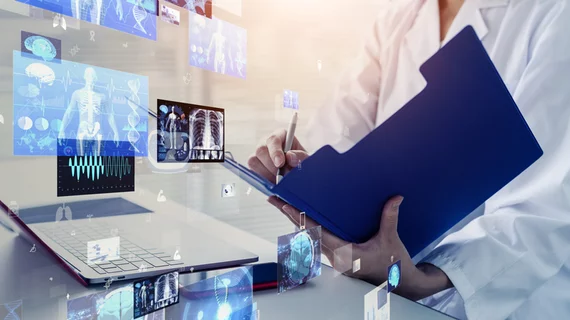Are video radiology reports the wave of the future?
Including videos that explain imaging results with written radiology reports can increase patients’ understanding of findings without significantly disrupting radiologists’ workflows.
That’s according to new research published in the American Journal of Roentgenology that analyzed how video reports impacted patient satisfaction and report comprehension. Authors of the study report that patients who received video reports explaining their image findings rated the experience at 4.7 out of 5, both for satisfaction with the process and for how well the video helped them to better understand their radiology reports. The video reports could play an important role in increasing radiologists’ roles in patient-centered care, the experts suggested.
“For decades radiologists have provided traditional radiology reports that are full of medical jargon and extremely difficult for patients to understand and decipher,” lead author of the study, Michael P. Recht, MD, Louis Marx Professor of Radiology and chair of the Department of Radiology at NYU Langone Health, said in a statement. “Our findings demonstrate that when radiologists take a more active role in patient-centered care and provide helpful information about a particular diagnosis in an easy-to-comprehend manner, both the patient and clinician benefit.”
Patients typically receive a written report of their image findings in addition to a copy of their imaging upon request. While it is the responsibility of referring providers to explain radiological findings, many patients still lack a thorough understanding of their imaging results. This is especially true in the cases of cross sectional and contrast-enhanced studies that merit more detailed interpretations.
Over a 4-month study period, Recht and colleagues analyzed how including video explanations with written radiology reports might impact patients’ report comprehension. This included having radiologists complete a total of 3,763 video radiology reports using an integrated tool within the diagnostic viewer that allowed for both image and voice capture. The radiologists had automatic access to cinematic rendered images that they were able to voice over and include as a part of their reports, which were made available to patients via health portals.
On average, the videos lasted for 55 seconds and took less than 4 minutes to create. A total of 864 video reports were viewed by patients, who were also surveyed on their experiences using the tool. Patients rated their experiences at 4.7 out of 5, and 91% reported preferring written and video reports over written reports alone.
“Our study disrupts the old adage that radiologists ‘sit in a dark reading room all day’ and are invisible to patients,” Recht said. “Through projects and research like this, our radiologists take a more active approach to patient-centered care that allows our department to provide exceptional, world-class care.”
Related radiology reporting content:
Immediate radiology report access leads to influx of patient questions for 78% of providers
New ACR report identifies 3 pressing concerns when sharing patient imaging data
Deep learning model triages brain MRIs for abnormalities to prioritize reads
Experts call for more structured reporting after study reveals wide variances in radiologist reads

